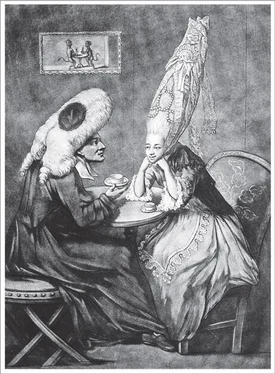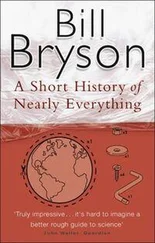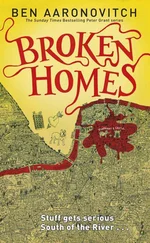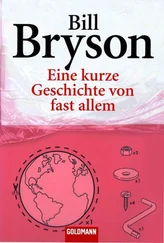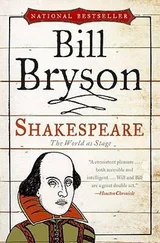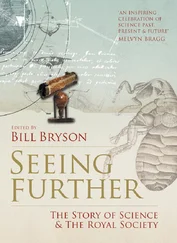Bill Bryson - At Home
Здесь есть возможность читать онлайн «Bill Bryson - At Home» весь текст электронной книги совершенно бесплатно (целиком полную версию без сокращений). В некоторых случаях можно слушать аудио, скачать через торрент в формате fb2 и присутствует краткое содержание. Жанр: Старинная литература, на английском языке. Описание произведения, (предисловие) а так же отзывы посетителей доступны на портале библиотеки ЛибКат.
- Название:At Home
- Автор:
- Жанр:
- Год:неизвестен
- ISBN:нет данных
- Рейтинг книги:4 / 5. Голосов: 1
-
Избранное:Добавить в избранное
- Отзывы:
-
Ваша оценка:
- 80
- 1
- 2
- 3
- 4
- 5
At Home: краткое содержание, описание и аннотация
Предлагаем к чтению аннотацию, описание, краткое содержание или предисловие (зависит от того, что написал сам автор книги «At Home»). Если вы не нашли необходимую информацию о книге — напишите в комментариях, мы постараемся отыскать её.
At Home — читать онлайн бесплатно полную книгу (весь текст) целиком
Ниже представлен текст книги, разбитый по страницам. Система сохранения места последней прочитанной страницы, позволяет с удобством читать онлайн бесплатно книгу «At Home», без необходимости каждый раз заново искать на чём Вы остановились. Поставьте закладку, и сможете в любой момент перейти на страницу, на которой закончили чтение.
Интервал:
Закладка:
Now as I stood on the roof of my house, taking in this unexpected view, it struck me how rather glorious it was that in two thousand years of human activity the only thing that had stirred the notice of the outside world even briefly was the finding of a Roman phallic pendant. The rest was just centuries and centuries of people quietly going about their daily business—eating, sleeping, having sex, endeavoring to be amused—and it occurred to me, with the forcefulness of a thought experienced in 360 degrees, that that’s really what history mostly is: masses of people doing ordinary things. Even Einstein will have spent large parts of his life thinking about his holidays or new hammock or how dainty was the ankle on the young lady alighting from the tram across the street. These are the sorts of things that fill our lives and thoughts, and yet we treat them as incidental and hardly worthy of serious consideration. I don’t know how many hours of my school years were spent considering the Missouri Compromise or the War of the Roses, but it was vastly more than I was ever encouraged or allowed to give to the history of eating, sleeping, having sex, or endeavoring to be amused.
So I thought it might be interesting, for the length of a book, to consider the ordinary things in life, to notice them for once and treat them as if they were important, too. Looking around my house, I was startled and somewhat appalled to realize how little I knew about the domestic world around me. Sitting at the kitchen table one afternoon, playing idly with the salt and pepper shakers, it occurred to me that I had absolutely no idea why, out of all the spices in the world, we have such an abiding attachment to those two. Why not pepper and cardamom, say, or salt and cinnamon? And why do forks have four tines and not three or five? There must be reasons for these things. Dressing, I wondered why all my suit jackets have a row of pointless buttons on every sleeve. I heard a reference on the radio to someone paying for room and board, and realized that when people talk about room and board, I have no idea what the board is that they are talking about. Suddenly the house seemed a place of mystery to me.
So I formed the idea to make a journey around it, to wander from room to room and consider how each has featured in the evolution of private life. The bathroom would be a history of hygiene, the kitchen of cooking, the bedroom of sex and death and sleeping, and so on. I would write a history of the world without leaving home.
The idea had a certain appeal, I must say. I had recently done a book in which I tried to understand the universe and how it is put together, which was a bit of an undertaking, as you will appreciate. So the idea of dealing with something as neatly bounded and cozily finite as an old rectory in an English village had obvious attractions. Here was a book I could do in carpet slippers.
In fact it was nothing like that. Houses are amazingly complex repositories. What I found, to my great surprise, is that whatever happens in the world—whatever is discovered or created or bitterly fought over—eventually ends up, in one way or another, in your house. Wars, famines, the Industrial Revolution, the Enlightenment—they are all there in your sofas and chests of drawers, tucked into the folds of your curtains, in the downy softness of your pillows, in the paint on your walls and the water in your pipes. So the history of household life isn’t just a history of beds and sofas and kitchen stoves, as I had vaguely supposed it would be, but of scurvy and guano and the Eiffel Tower and bedbugs and body-snatching and just about everything else that has ever happened. Houses aren’t refuges from history. They are where history ends up.
I hardly need point out that history of any kind tends to sprawl. In order to fit the story of private life into a single volume, it was obvious from the outset that I would have to be painfully selective. So, although I do venture into the distant past from time to time (you can’t talk about baths without talking about Romans, for one thing), what follows mostly concentrates on events of the last 150 years or so, when the modern world was really born—coincidentally just the period that the house we are about to wander through has existed.
We are so used to having a lot of comfort in our lives—to being clean, warm, and well fed—that we forget how recent most of that is. In fact, achieving these things took forever, and then they mostly came in a rush. How that happened when it did, and why it took so long to get it, is what the following pages are all about.
Though I have not identified the village in which the Old Rectory stands, I should note that the house is real, as are (or were) the people mentioned in relation to it. I should also note that the passage referring to the Reverend Thomas Bayes in Chapter I appeared in slightly different form in an introduction I wrote for Seeing Further: The Story of Science and the Royal Society .
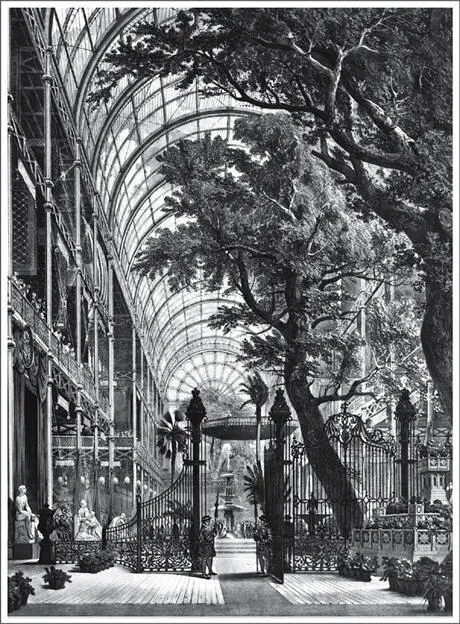
Interior view of Joseph Paxton’s ethereal Crystal Palace at the Great Exhibition of 1851. These gates can still be seen in Kensington Gardens . (photo credit 1.1)
• CHAPTER I •
THE YEAR
I
In the autumn of 1850, in Hyde Park in London, there arose a most extraordinary structure: a giant iron-and-glass greenhouse covering nineteen acres of ground and containing within its airy vastness enough room for four St. Paul’s Cathedrals. For the short time of its existence, it was the biggest building on Earth. Known formally as the Palace of the Great Exhibition of the Works of Industry of All Nations, it was incontestably magnificent, but all the more so for being so sudden, so startlingly glassy, so gloriously and unexpectedly there . Douglas Jerrold, a columnist for the weekly magazine Punch , dubbed it the Crystal Palace, and the name stuck.
It had taken just five months to build. It was a miracle that it was built at all. Less than a year earlier it had not even existed as an idea. The exhibition for which it was conceived was the dream of a civil servant named Henry Cole, whose other principal claim to history’s attention is as the inventor of the Christmas card (as a way of encouraging people to use the new penny post). In 1849, Cole visited the Paris Exhibition—a comparatively parochial affair, limited to French manufacturers—and became keen to try something similar in England, but grander. He persuaded many worthies, including Prince Albert, to get excited about the idea of a great exhibition, and on January 11, 1850, they held their first meeting with a view to opening on May 1 of the following year. This gave them slightly less than fifteen months to design and erect the largest building ever envisioned, attract and install tens of thousands of displays from every quarter of the globe, fit out restaurants and restrooms, employ staff, arrange insurance and police protection, print up handbills, and do a million other things, in a country that wasn’t at all convinced it wanted such a costly and disruptive production in the first place. It was a patently unachievable ambition, and for the next several months they patently failed to achieve it. In an open competition, 245 designs for the exhibition hall were submitted. All were rejected as unworkable.
Facing disaster, the committee did what committees in desperate circumstances sometimes do: it commissioned another committee with a better title. The Building Committee of the Royal Commission for the Great Exhibition of the Works of Industry of All Nations consisted of four men—Matthew Digby Wyatt, Owen Jones, Charles Wild, and the great engineer Isambard Kingdom Brunel—and a single instruction, to come up with a design worthy of the greatest exhibition in history, to begin in ten months, within a constrained and shrunken budget. Of the four committee members, only the youthful Wyatt was a trained architect, and he had not yet actually built anything; at this stage of his career he made his living as a writer. Wild was an engineer whose experience was almost exclusively with boats and bridges. Jones was an interior decorator. Only Brunel had experience with large-scale projects. He was indubitably a genius but an unnerving one, as it nearly always took epic infusions of time and cash to find a point of intersection between his soaring visions and an achievable reality.
Читать дальшеИнтервал:
Закладка:
Похожие книги на «At Home»
Представляем Вашему вниманию похожие книги на «At Home» списком для выбора. Мы отобрали схожую по названию и смыслу литературу в надежде предоставить читателям больше вариантов отыскать новые, интересные, ещё непрочитанные произведения.
Обсуждение, отзывы о книге «At Home» и просто собственные мнения читателей. Оставьте ваши комментарии, напишите, что Вы думаете о произведении, его смысле или главных героях. Укажите что конкретно понравилось, а что нет, и почему Вы так считаете.
